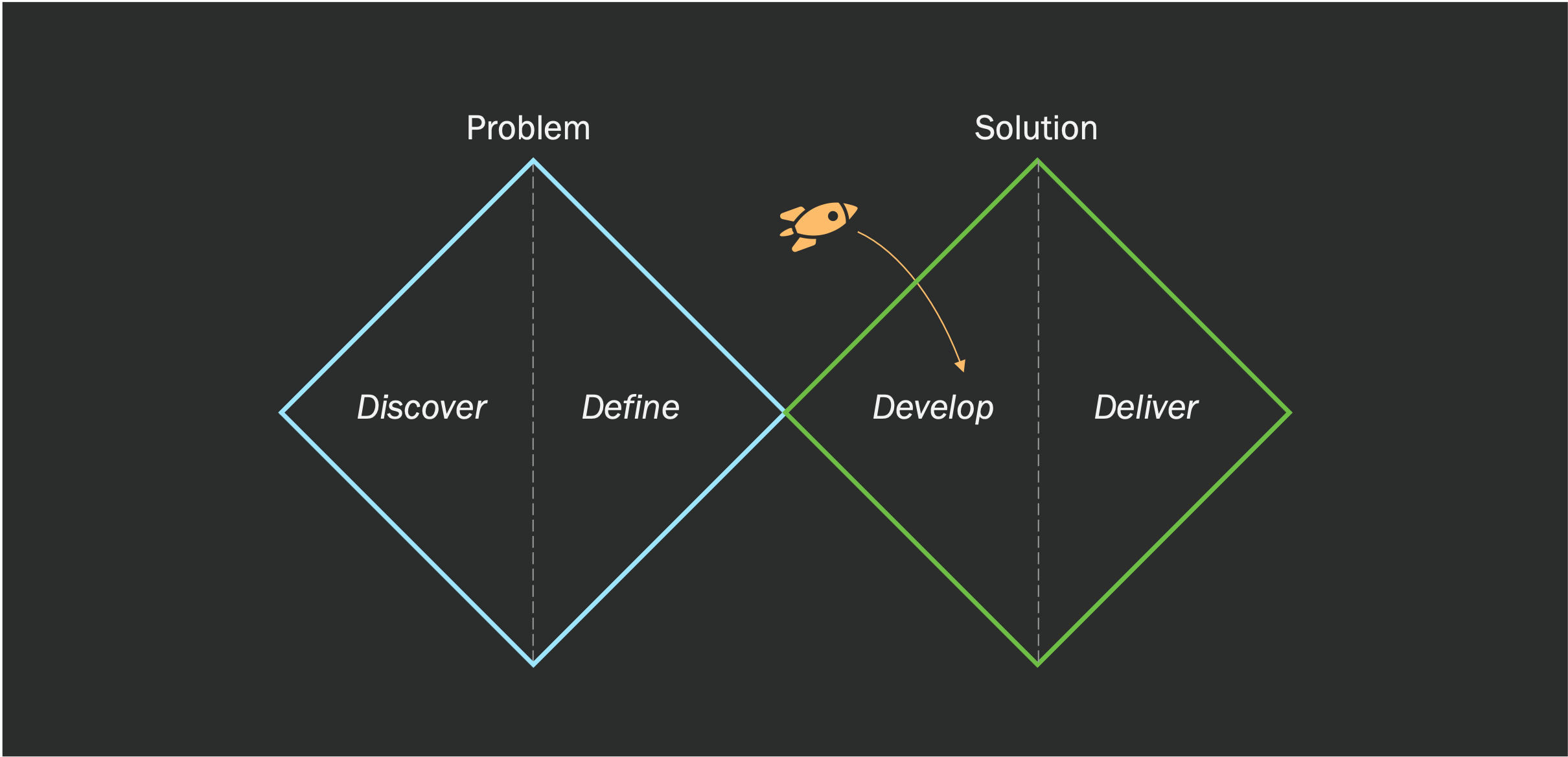I apply a design thinking process more or less to everything I do – from baking biscuits in my free time to designing an application for train dispatchers in my work hours. The essence is the same (in a nutshell: explore, test, improve, repeat), but of course, each context is different and has its challenges and uniqueness. So how it is to design for a context where safety is the priority? I collected four points that I see as unique.
A bit of background first – As the name suggests, safety-critical environments revolve around work environments where safety is the primary focus: unsafe operations can potentially have an impact on people, the environment, and society. Examples can include healthcare or aviation markets just to name a few. These are high-complexity contexts involving tight interdependencies, strict boundaries, and a long list of pre-requisites that determine the safe functioning of the system.
Starting at the second half of the double diamond
From a user’s perspective, there is a task that needs to be carried out that is part of an existing workflow supported by a certain tool, powered by a certain technology that feeds into a product. In complex contexts, advancements in technology are typical triggers for the start of an innovation and it is less common to include or to start with a user problem. And since projects are initiated in this manner, as a designer, you often end up being involved at a later stage when the solution path has already been defined. You are therefore already in the ‘converging’ part of the double diamond. In such scenarios, the role of a designer is to help re(de)fine the human component of the envisioned solution, by critically looking at the impact of innovation on the end-users and their work.

Being creative inside the box
The main goal is people can carry out their work safely and can ensure safe operations. Therefore, specific attention to the context of use and the existing boundaries are essential. Certain conventions, for example, colour coding, are embedded in the user’s behavioural pattern and can’t be changed without thorough consideration. Another example is the fact that people may be using the product for hours or throughout an entire shift. Those nice animations and bright colours in our everyday apps automatically become a no-go.
Weighted decisions must be made between the level of change you bring in and the possible unwanted outcomes on safety and work ergonomics. This makes the design job very function-oriented, in other words getting creative inside the box.
A systematic view around the human
Behind any product, there is always a bigger ecosystem at play. In safety-critical industries, this encompasses elements such as procedures, protocols, rules, regulations, but also organisations goals. At a closer level, there are also a series of other applications and workflows that need to be taken into consideration next to the one you are designing – the user interface is just the tip of the iceberg. Mapping this broad web of information becomes even more essential as compared to consumer products. Even more important is making sure the focus stays on the people, the ultimate users of the design.
Making the implicit, explicit
The more you know about a context the better you can anticipate issues, some of which may not even be evident to the client. In a safety-critical environment, building knowledge of the context takes time. You need all the help from experienced colleagues, the stakeholders, a good dose of patience and listening skills. Bringing everyone together, involving them in the process from beginning to end, is beneficial and efficient. It helps both the designer – in understanding the context, thus designing better; and the client – in getting clarity over the human-related challenges. The creation of common ground enhances the possibility to find out issues and solutions early in the process but also making sure the development moves in the direction that benefits the users. Stakeholders’ involvement is therefore key, just like in any design-oriented process.
These are few things I find unique about designing for safety-critical contexts. For me, it makes it interesting and challenging in a positive way. I would love to hear what you think!
Over the next couple of blogs, I will talk a bit more about methods my colleagues and I use to navigate through these types of challenges. If you are already curious to know more about how we do it, you can visit our website or contact me at [email protected]